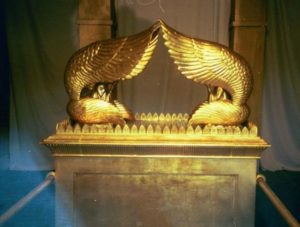Parshas Terumah: Inside, Outside and In-Between

The aron habris, the holy ark described in the parshah, was essentially a wooden box set into a golden one, with another golden one set inside it (Yoma 72b).
The Gemara (ibid) sees in the aron, which contains the luchos, shivrei luchos and a Torah scroll, a metaphor for the coherence of conscience and behavior that defines a true scholar. “A talmid chacham,” Rava teaches there, “who isn’t tocho kiboro,” — whose inside [essence] isn’t like his outside [the image yielded by his behavior] — “isn’t a talmid chacham.”
My revered rebbe, Rabbi Yaakov Weinberg, zt”l, noted that the Gemara’s wording is pointed. We are not exhorted to bring our “outsides” into line with our “insides” – to first achieve purity of heart and then display its signifiers – but rather the other way around. We act properly to first emulate the comportment and behavior of those more spiritually accomplished than we are — to present an image of observance and propriety– even if our souls may not be as pure as our clothing and actions seem to declare.
That is because, in the Sefer Hachinuch’s words, “A person is affected by his actions.” How we dress, speak and act can change who we are.
Achieving coherence of appearance and heart should be the ultimate goal for us all. But we shouldn’t feel hypocritical or despondent if we show the world a better image of ourselves than we deserve. What matters is only that we are working to bring our inner selves into line with our outer ones.
What’s more, according to a Midrash brought by Rashi on the posuk uvicheit yechemasni imi (Tehillim 51:7), Dovid Hamelech lamented the fact that when his parents conceived him, their intent was basically selfish (a thought reflected as well in his words ki avi vi’imi azovuni, Tehillim 27:10). And yet, Dovid’s father was Yishai, who (Shabbos 55b) was without sin!
The inescapable conclusion is that self-interest isn’t sin. The essential sense of self is inherent in being human, and no contradiction to righteousness.
That, too, is reflected in the aron. It was gold within and without, yes, but there was wood (perhaps hinting to the eitz hadaas) between the golden layers. One’s toch and bar can be pure and consistent, but there is always a self in the middle.
© 2021 Rabbi Avi Shafran


Recent Comments